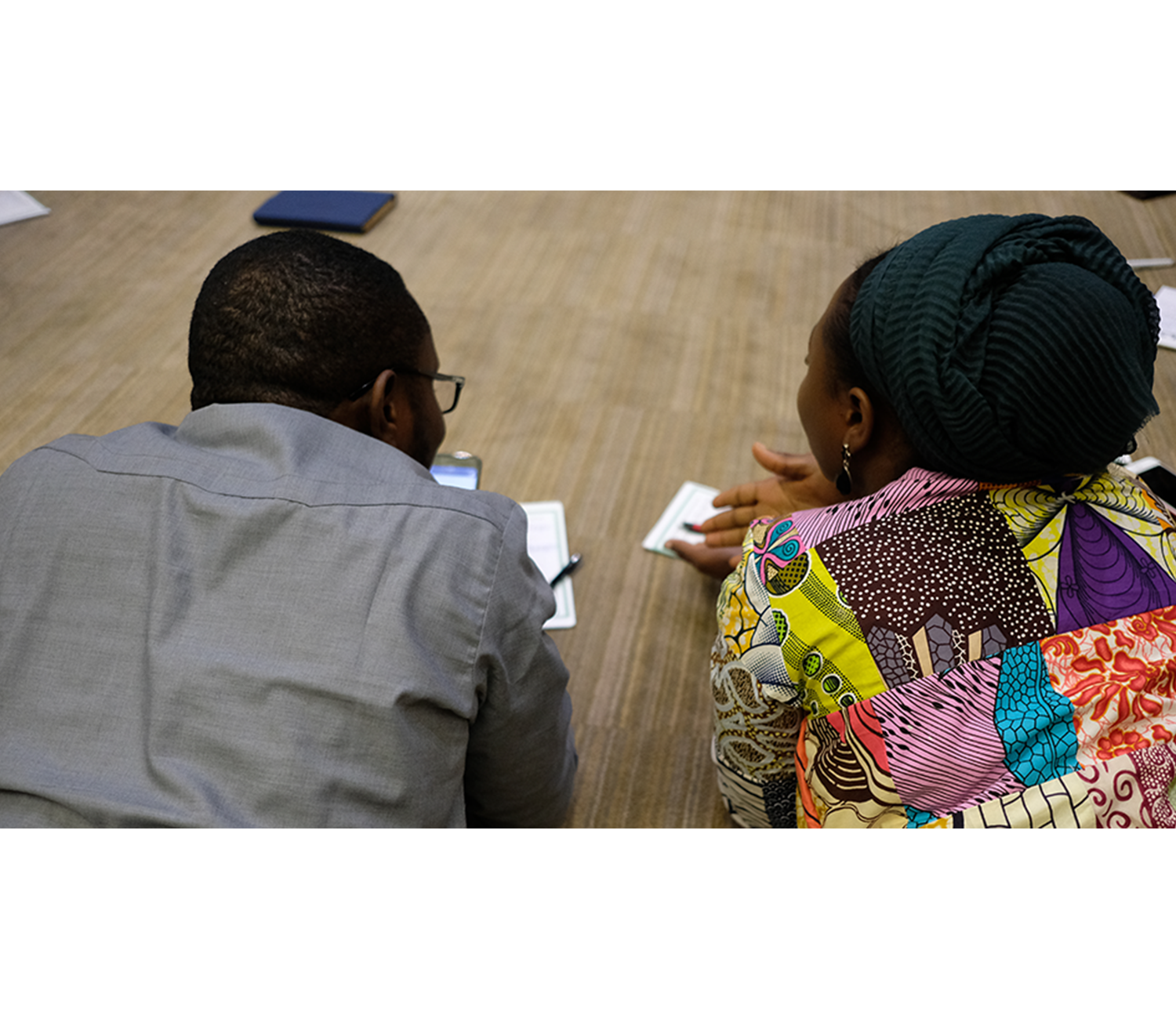Check your progress and involve youth from key populations
MONITOR
Are programmes achieving their goals? Do they truly serve the people they’re meant to reach? As implementers monitor progress and check quality, they must also engage adolescents and young people from key populations to hold programmes accountable.
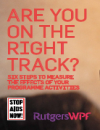 Are you on the right track? Six steps to measure the effect of your programme activities
Are you on the right track? Six steps to measure the effect of your programme activitiesThis is a hands-on instruction manual for developing an outcome monitoring and evaluating plan that fits your organisation’s specific situation. The workbook demonstrates the six steps you need to measure the achievements of your organisation’s activities related to sexual and reproductive health and rights and HIV prevention.
Etes-vous sur la bonne voie? Six etapes pour mesurer les effets de vos activites de programme
Rutgers International, Aidsfonds
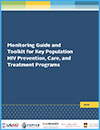 Monitoring guide and toolkit for key population HIV prevention, care, and treatment programs
Monitoring guide and toolkit for key population HIV prevention, care, and treatment programsThis guide offers practical, ready-to-use advice and tools to collect and analyse data for monitoring peer outreach, clinical services, and support programs for key populations. It contains examples of tools and forms from around the world that may support efforts in monitoring programs and services and describes issues that should be considered when using these tools.
FHI 360 LINKAGES, 2016
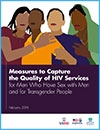 Measures to capture the quality of HIV services for men who have sex with men and for transgender people
Measures to capture the quality of HIV services for men who have sex with men and for transgender peopleThis short report discusses existing measures of quality for HIV programmes for men who have sex with men and transgender people, at the level of the provider, the organisation, and the health system. It highlights gaps, and suggests future directions for improving quality indicators. Measure Evaluation, 2018
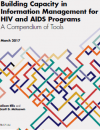 Building capacity in information management for HIV and AIDS programs: A compendium of tools
Building capacity in information management for HIV and AIDS programs: A compendium of toolsThis is a guide of nearly 50 tools and other development-oriented materials that are free and readily available, such as training curricula and web-based toolkits. It is designed to build the capacity of HIV programmes in information management, especially health information systems and monitoring and evaluation systems.
Measure Evaluation, 2017
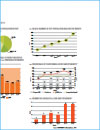 HIV cascade toolkit: A user's guide for constructing, presenting, interpreting and using HIV cascades in Vietnam
HIV cascade toolkit: A user's guide for constructing, presenting, interpreting and using HIV cascades in VietnamThis guide is designed to help government and civil society implementers in Viet Nam construct, present, interpret and use HIV cascades for the continuum of prevention and care. The document outlines 1) recommended indicators for the standardized construction cascades, 2) simple steps to follow during the cascade generation process, 3) presentation guidelines for illustrating cascade performance by different variables, and 4) tips to help implementers effectively interpret and use HIV cascades.
FHI 360 LINKAGES, 2014
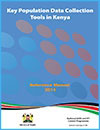 Key population data collection tools in Kenya
Key population data collection tools in KenyaA reference guide for implementing agencies, with tools to capture standardized data on programmes for key populations in the Kenya HIV prevention programme. The tools cover outreach, clinical services and project-level data.
NASCOP, 2014
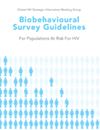 Biobehavioural survey guidelines for populations at risk for HIV
Biobehavioural survey guidelines for populations at risk for HIVSupplemental materials
These are guidelines and tools for the design and implementation of bio-behavioural surveys of HIV prevalence in key populations. They standardize the conduct of BBS permit comparisons between—as well as within—countries over time. For a range of supplemental tools, including questionnaires, budget calculators and timelines, click on the Working Group's title above.
Global HIV Strategic Information Working Group , 2017
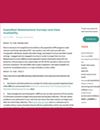 Expedited biobehavioral surveys and data availability
Expedited biobehavioral surveys and data availabilitySupplemental materials
This is a set of tools to make the planning and implementation of biobehavioural surveys—and the provision of results—efficient and prompt. The tools—downloadable from this website—include technical considerations; a priority results table; a budget template; and a collection of guidelines, forms and checklists for surveys.
PEPFAR, 2018<
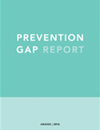 Tool to set and monitor targets for HIV prevention, diagnosis, treatment and care for key populations
Tool to set and monitor targets for HIV prevention, diagnosis, treatment and care for key populationsSupplemental materials
This document provides guidance on monitoring and evaluating implementation of the comprehensive package of interventions to address HIV among key populations. The framework helps plan and assess progress at the national and subnational levels. It includes a set of harmonized indicators, and guidance on setting targets for them.
WHO, 2015
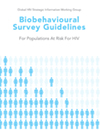 Operational guidelines for M&E of HIV programmes for sex workers, MSM, and transgender: Volume I - Volume II
Operational guidelines for M&E of HIV programmes for sex workers, MSM, and transgender: Volume I - Volume IIThese documents provide detailed guidance on monitoring and evaluation of HIV prevention programmes, methods to estimate indicators, and generic forms for collecting data.
UNAIDS, Measure Evaluation, UNFPA, PEPFAR, UNDP, Global Fund, ICASO, 2013
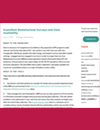 Operational guidelines for monitoring and evaluation of HIV programmes for people who inject drugs:
Operational guidelines for monitoring and evaluation of HIV programmes for people who inject drugs:National & subnational level - Service delivery level - Tools & annexes
These documents provide detailed guidance on monitoring and evaluation of HIV prevention programmes, methods to estimate indicators, and generic forms for collecting data.
UNAIDS, 2013 UNAIDS, 2011
 Jumping hurdles: Creating friendly health services for young people
Jumping hurdles: Creating friendly health services for young peopleThis tool facilitates a structured discussion among healthcare staff, clinics or other service- providers, and young members of key populations regarding how welcome and friendly a service setting is—and how to improve it. A facilitator's guide and worksheets show how to prepare for and lead a discussion on the availability, accessibility, acceptability, and quality of services.
Jumping Hurdles - Facilitator's Guide
Jumping Hurdles - Facilitation tool
Youth Voices Count, 2016
 Explore: A toolkit for involving young people as researchers in sexual and reproductive health and rights programmes
Explore: A toolkit for involving young people as researchers in sexual and reproductive health and rights programmesThis is a handbook and facilitator's guide for involving young people in monitoring and evaluation of the programmes that serve them. The introductory document includes guidelines to create conditions for successful youth participation.
A toolkit for involving young people as researchers in sexual and reproductive health and rights programmes
Monitoring and evaluation and research in SRHR programmes for young people - Training manual
Monitoring and evaluation and research in SRHR programmes for young people - Handbook
Rutgers International, IPPF, 2013
 Participatory advocacy to promote the quality of HIV testing services for young people in China
Participatory advocacy to promote the quality of HIV testing services for young people in ChinaThis document illustrates a two-year, peer-led "secret client" programme that encouraged young people to seek HIV testing and to report back on the quality of services in order to make service delivery more youth-friendly.
Participatory advocacy to promote the quality of HIV testing services for young people in China
Participatory advocacy to promote the quality of HIV testing services for young people in China - Guidelines
Participatory advocacy to promote the quality of HIV testing services for young people in China - Quality assessment questionnaire
Chinese Association of STD/AIDS Prevention and Control, 2017
